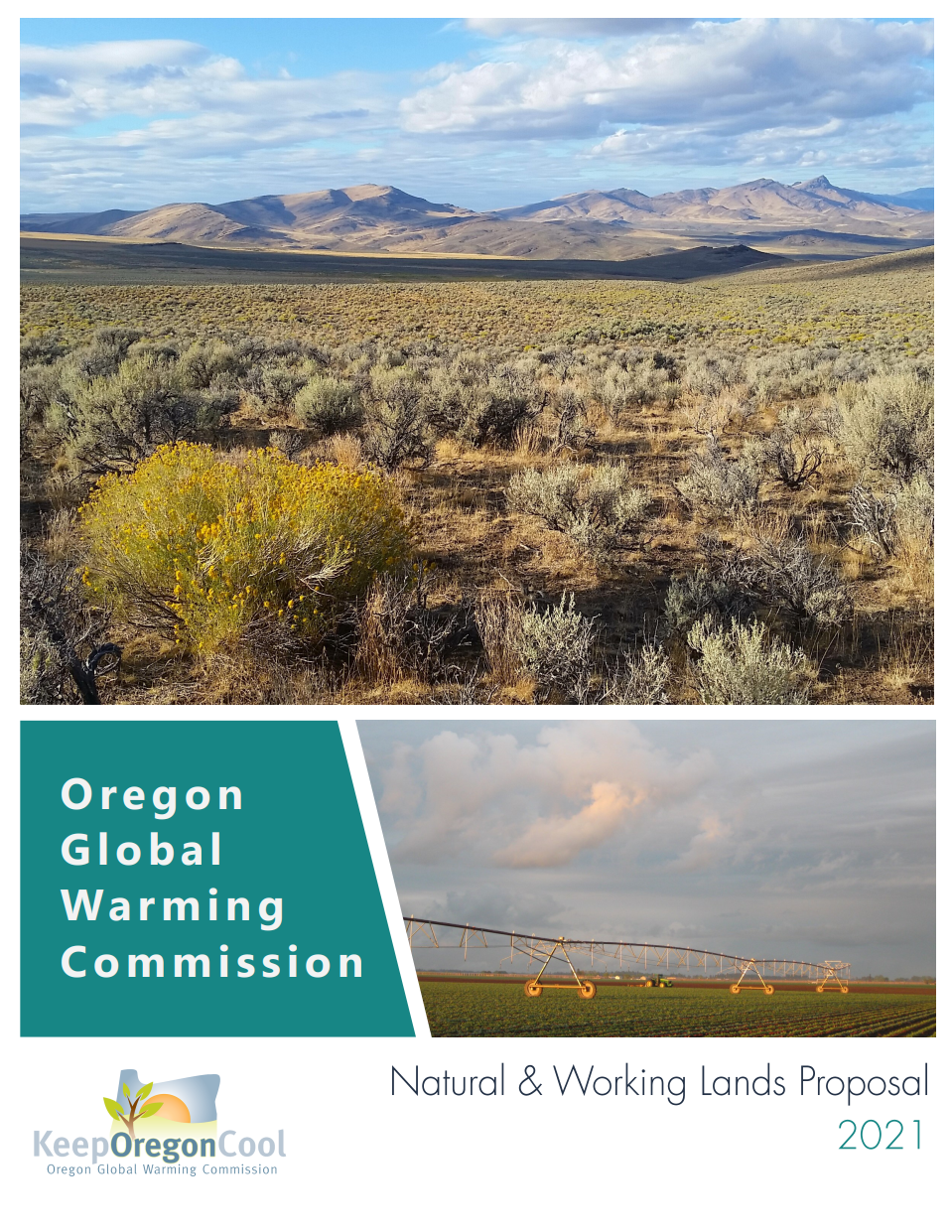Carbon Capture and Storage on Oregon’s Natural & Working Lands
Oregon's natural and working lands — forests, grasslands, rangelands, farmlands, wetlands, and urban parks and open spaces — produce many benefits, including opportunities to capture and store carbon to reduce Oregon's overall/net contributions to greenhouse gas emissions. Oregon has goals to increase the amount of carbon natural and working lands capture and store by 2030 and 2050. If the state is successful in achieving these as well as sector-based carbon storage goals, Oregon could be net neutral and mitigating the effects of climate change by 2040.
Note: work completed prior to 2024 was under the name Oregon Global Warming Commission.
2023 Natural & Working Lands Report
In 2021, the commission adopted a Natural and Working Lands Proposal that set goals for carbon capture and storage on Oregon's natural and working lands: Sequester at least an additional 5 MMTCO2e per year in Oregon’s natural and working lands and waters by 2030, and at least 9.5 MMTCO2e per year by 2050 relative to a 2010 to 2019 baseline. The commission recommended that the natural and working lands outcome-based goal should be separate from, and in addition to, Oregon’s sector-based emissions reduction goals as established by the Legislature and updated in Governor Brown’s Executive Order 20-04.
To further those efforts, the Institute for Natural Resources at Oregon State University received funding from the U.S. Climate Alliance and Natural Resources Conservation Service to produce a final report in 2023 highlighting elements that could advance the Natural & Working Lands Proposal.
INR led several activities:
Establish and facilitate a Natural and Working Lands Advisory Committee.
A team of technical experts also provided invaluable input.
Develop a methodology to inventory net carbon capture in Oregon's natural and working lands.
Develop climate-smart management practices and establish an activity-based baseline.
Define the scope of work for a Workforce and Training needs analysis.
Identify community impact metrics.
Produce a final report.
Also see a list of background publications and materials.
Click to enlarge.
NATURAL AND WORKING LANDS proposal background
In August 2021, the commission approved a Natural and Working Lands Proposal in response to Governor Brown’s Executive Order 20-04. The commission worked closely with Tribes, landowners and managers, federal and state agencies, conservation organizations, environmental justice leaders, technical assistance providers, and scientists to inform the Proposal. In total, we heard from more than 1,000 individuals and organizations over an 18-month period.
The proposal sets a net goal for sequestration and storage in natural and working lands; it makes recommendations for how to track progress toward the goals and it identifies key strategies and programs needed to achieve the goal. Collectively the strategies and programs the commission outlined, if sufficiently and effectively resourced and designed, would go a long way toward reaching the natural and working lands ambition we recommend. If carefully designed, strategies for increasing sequestration in Oregon’s natural and working lands will also provide multiple co-benefits from increased resilience to the impacts of climate change, to improved air quality, better fish and wildlife habitat, jobs and economic development opportunities, and to lower health and energy costs. While significant funding will be needed to achieve the sequestration and storage goals, the financial savings from avoiding the worst impacts of climate change and the value of the natural and working lands goods and services we protect will far exceed those costs.
Learn about natural and working lands with this short one minute video created by US Nature4Climate.



